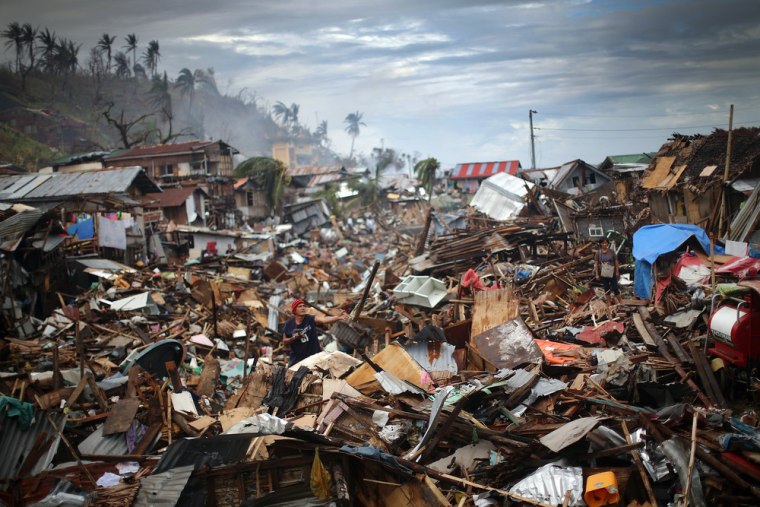
As government officials and aid workers struggled to reach communities devastated by Typhoon Haiyan 11 days ago, the World Bank has offered the Philippines a $500-million emergency loan to help it construct buildings able to withstand high winds and severe flooding.
“We are committed to supporting the government in its effort to recover and rebuild, and to help Filipinos strengthen their resilience against increasingly frequent extreme weather events,” said World Bank Group President Jim Yong Kim said in a statement on Monday. The bank did not offer details on the terms of the offer or when funds would be distributed.
The loan would support rebuilding of buildings that can withstand winds of 150 to 170 mph and resist severe flooding, it said. According to the United Nations, Typhoon Haiyan killed at least 4,200 when it tore through the Philippines with sustained winds of 195 mph and tsunami-like storm surges on Nov. 8.
Nearly 500,000 homes were damaged when Haiyan hit, according to the Philippine disaster council. The storm displaced 3 million people and affected 9.8 million.
Over a week after Haiyan tore through the country, electricity was available only in pockets through generators. There was no running water, and people managed with water supplied by tankers, although many did not have even that. A massive effort by the international community, which has donated aid and cash worth more than $248 million, is beginning to show improvements on the ground, although more slowly than many had hoped.
Bernard Kerblat, UN High Commissioner for Refugees representative for the Philippines, said the agency was still facing coordination problems and bottlenecks.
"As of now, personally, I am not so sure that we've reached every single portion of the territory where people are in need of aid," he said.
"And, in fact, I wouldn't be surprised that unfortunately that there might still be, as I'm speaking to you, day 11 of this disaster, there might be still very isolated islands."
The government of , President Benigno Aquino III seemed keen to show that it was on top of the situation after complaints that many survivors had not received even the minimum of help.
Philippine Energy Secretary Jericho Petilla pledged to restore power to the storm ravaged region by Dec. 24, adding that he would resign if he didn’t succeed.
"It's difficult to celebrate Christmas without light," he told a press conference in Leyte province on Monday.
The president himself promised on Sunday he would stay in typhoon-battered Leyte province until he sees more progress in the aid effort.
Aquino is expected to set up camp in Tacloban, the capital of Leyte province that was almost completely destroyed by the typhoon, although it wasn’t clear where he will find accommodations in the ruins.
Reuters and The Associated Press contributed to this report.
Related: